When Angels Become Devils: The Universe's Final Act and the Cosmic Amnesia That Follows
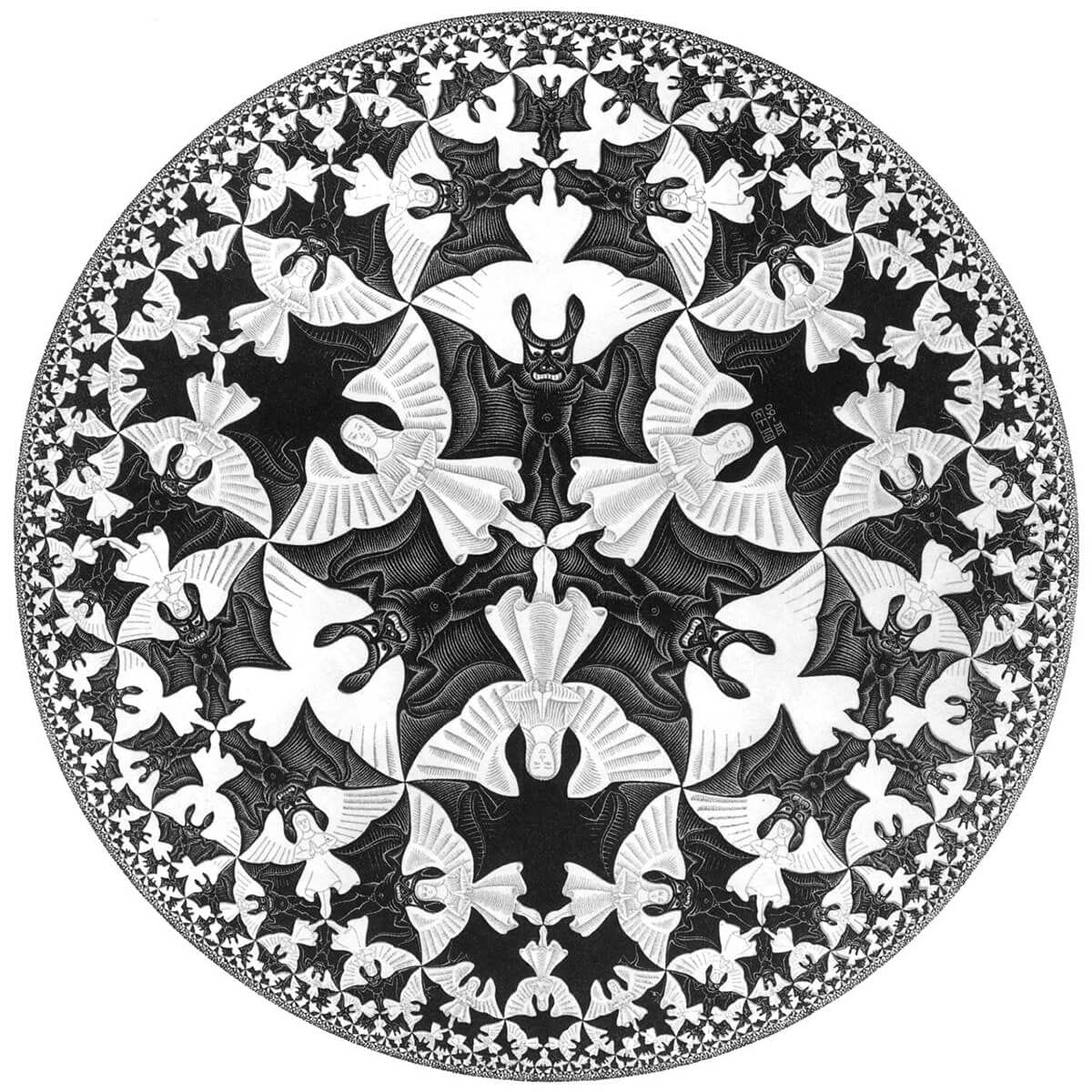
A journey through the last fireworks show in existence and Roger Penrose's mind-bending vision of a universe that forgets itself
Picture this: You're sitting in the ultimate cosmic theater, watching the very last show that will ever be performed in the universe. The stage is unimaginably vast, darker than the deepest ocean trench, and colder than your ex's heart. The audience? Just you, somehow, witnessing the final curtain call of reality itself. What you're about to see isn't just the end of everything—it's the most spectacular finale imaginable, followed by the strangest plot twist in cosmic history.
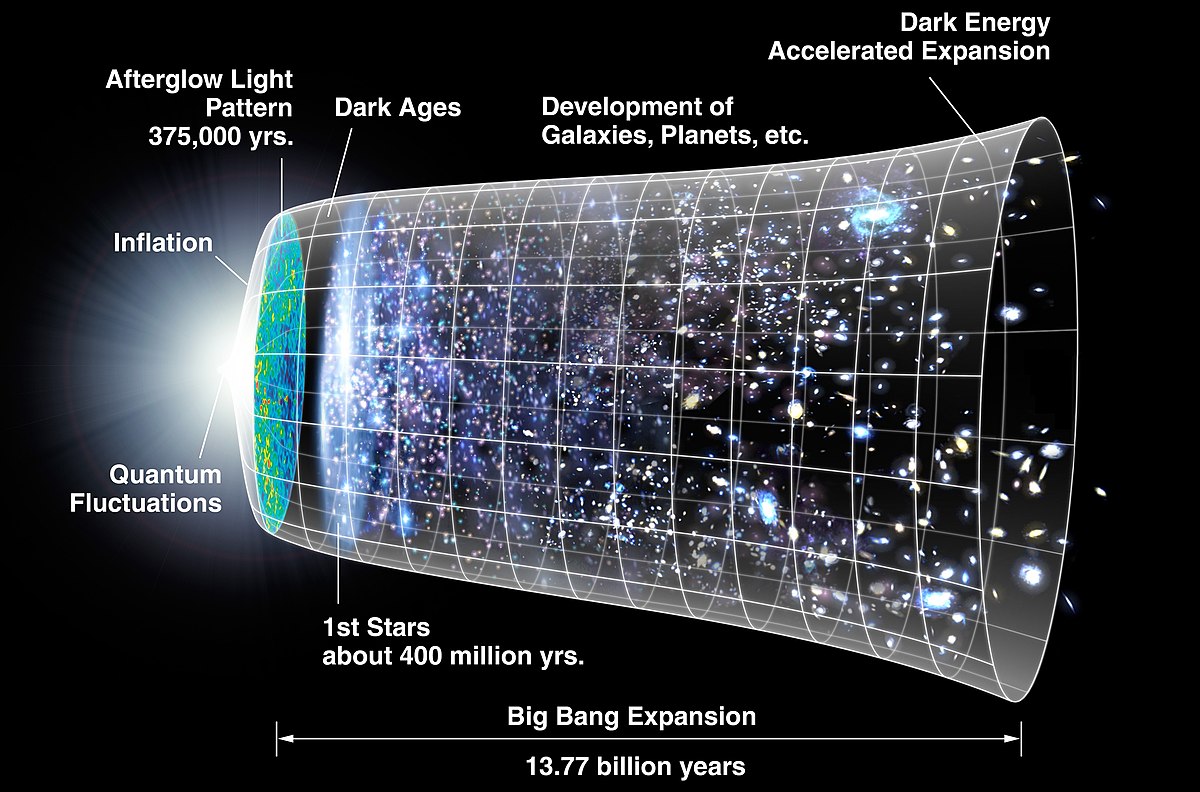
The complete timeline of our universe, from the Big Bang to the far future - but according to Penrose, this might not be the end of the story
Welcome to the mind-bending world where cutting-edge astrophysics meets the mathematical artistry of M.C. Escher, where Nobel Prize-winning physicist Roger Penrose uses images of angels transforming into devils to explain how the universe might literally forget its own existence. This isn't science fiction—this is the bleeding edge of cosmological theory, and it's far stranger than anything Hollywood could dream up.
The Last Fireworks Show in Existence
Let's start with that final performance. According to the brilliant minds at Kurzgesagt, the last interesting thing that will ever happen in our universe won't occur for an almost incomprehensible amount of time. We're talking about a period so vast that if you tried to write it out in years, you'd run out of atoms in the observable universe to use as digits. By this point, every star will have burned out, every galaxy will have evaporated into the cosmic void, and even the most massive black holes will have fizzled away into nothingness through Hawking radiation.

A black dwarf star - the cold, dark remnant of a white dwarf that has cooled for trillions of years
What remains? A universe populated by the cold, dead remnants of stars called black dwarfs—objects so dense that a teaspoon would weigh as much as a mountain, yet so cold they make liquid nitrogen seem like a tropical vacation. These stellar corpses drift through an empty cosmos, seemingly inert, seemingly finished with their cosmic story. But appearances, as we'll discover, can be deceiving.
Inside these incredibly dense objects, something remarkable is happening at a pace that makes continental drift look like a Formula 1 race. Quantum tunneling—one of the universe's most bizarre phenomena—is slowly, methodically causing atomic nuclei to fuse together. It's like watching paint dry, if paint took longer than the current age of the universe to show any noticeable change. Over eons that dwarf the time it took for life to evolve on Earth, this gradual fusion transforms the black dwarf's matter into iron, the most stable element in the cosmic periodic table.
But here's where things get interesting. The final step in this cosmic alchemy involves the fusion of silicon nuclei into Nickel-56, a radioactive element with a particularly dramatic personality. When Nickel-56 decays into iron, it releases positrons—antimatter electrons that are essentially the evil twins of regular electrons. These positrons have one job, and they're very good at it: they annihilate with the electrons that are providing the pressure to hold the star together.
Imagine a cosmic game of Jenga, where the blocks holding up the tower are slowly being removed one by one. Eventually, you reach that critical moment where there aren't enough blocks left to support the structure. In the case of our black dwarf, when enough electrons have been annihilated by their antimatter counterparts, the electron degeneracy pressure that's been holding the star together for countless eons suddenly fails.
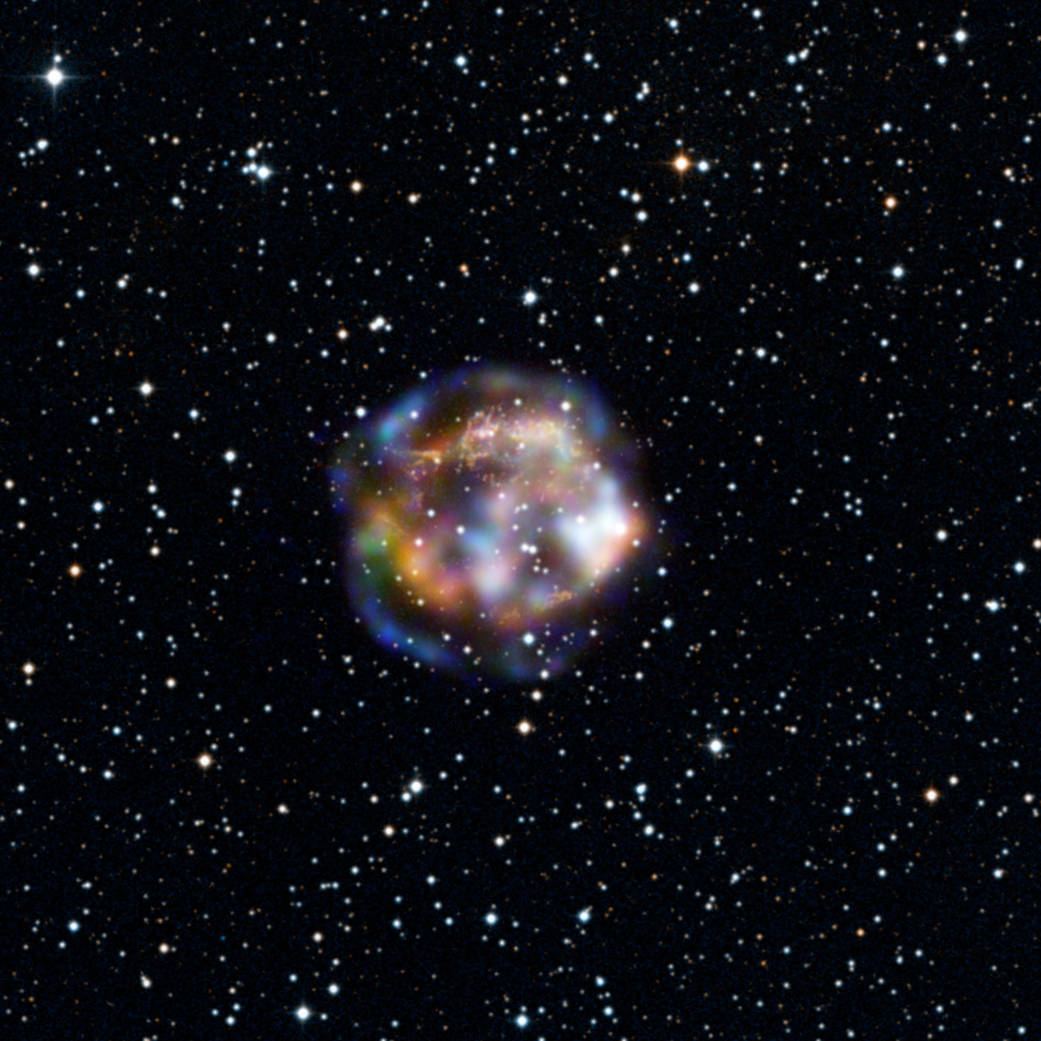
The spectacular aftermath of a stellar explosion - imagine this as the universe's final fireworks display
What happens next is the universe's final fireworks display: a catastrophic collapse followed by a spectacular supernova explosion that briefly illuminates the otherwise dark and empty cosmos. This isn't just any explosion—it's the last significant event before true nothingness, the final exclamation point at the end of the universe's longest sentence.
Picture that moment: in a cosmos that has been dark and silent for longer than our current universe has existed, suddenly there's light. For a brief, shining moment, this dying star becomes a beacon in the infinite darkness, a cosmic lighthouse sending its final signal into the void. And then, as quickly as it began, it's over. The light fades, the explosion dissipates, and the universe settles into its final state of maximum entropy—a cold, dark, empty expanse where nothing interesting will ever happen again.
Or will it?
Enter the Cosmic Amnesiac: Roger Penrose's Revolutionary Vision
This is where Sir Roger Penrose, Nobel Prize winner and mathematical maverick, enters our story with a theory so audacious it makes science fiction look conservative. Penrose, who has spent decades exploring the deepest mysteries of space, time, and consciousness, proposes something that sounds like the plot of a cosmic thriller: the universe doesn't actually end with that final supernova. Instead, it forgets itself and starts all over again.
Welcome to Conformal Cyclic Cosmology, or CCC—a theory that suggests our universe is just one chapter in an infinite book of cosmic rebirths. According to Penrose, what we think of as the "end" of the universe is actually more like a cosmic reset button, where the universe essentially develops amnesia about its own mass and scale, allowing it to begin anew.
But how does a universe forget itself? This is where Penrose's genius truly shines, and where his friendship with the legendary artist M.C. Escher provides us with the perfect visual metaphor. To understand this cosmic amnesia, we need to take a journey into the hyperbolic world of angels and devils.
The Devils That Become Angels: Escher's Cosmic Vision
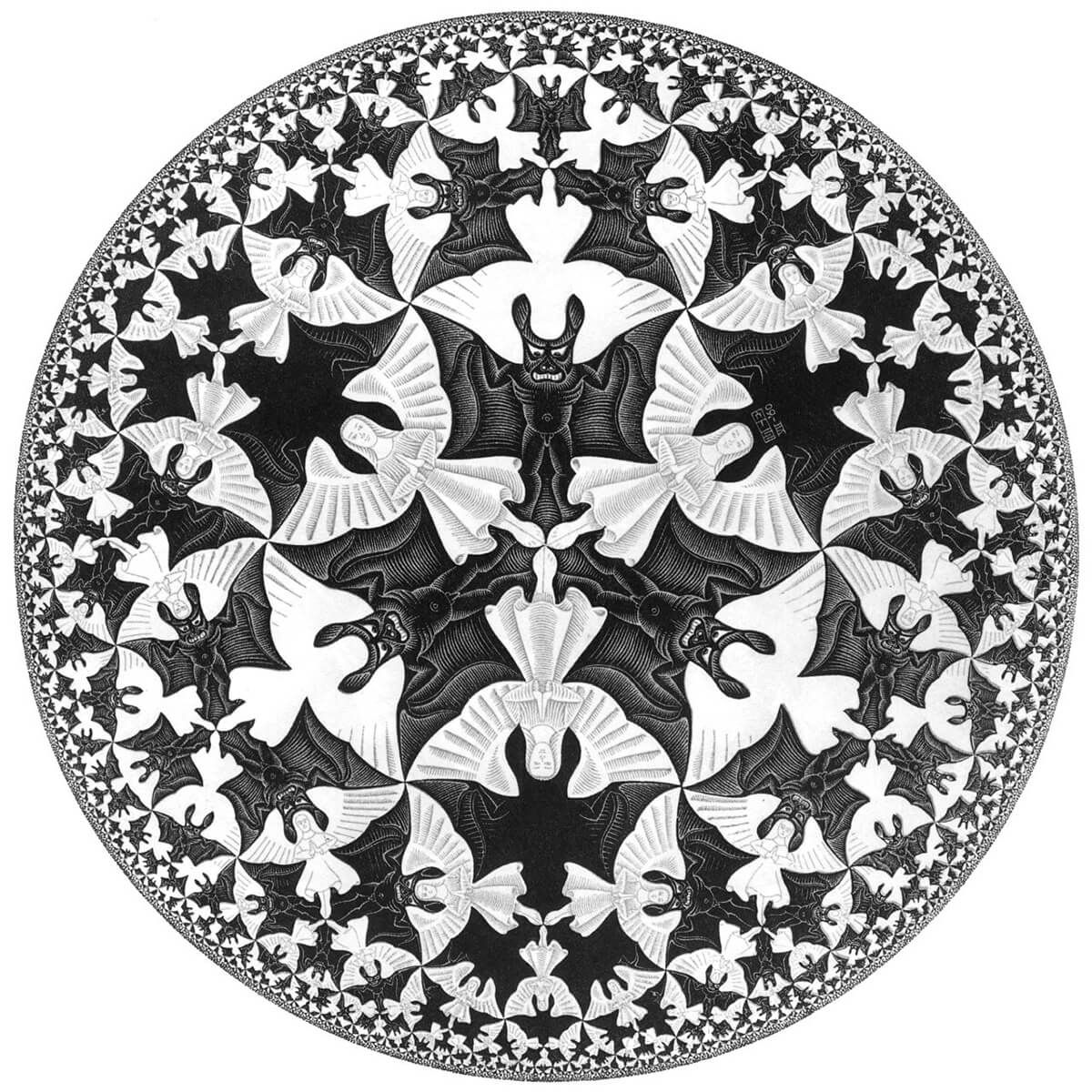
M.C. Escher's "Circle Limit IV (Heaven and Hell)" - the image that Penrose uses to illustrate cosmic boundaries and transformation
In 1960, M.C. Escher created one of his most haunting and mathematically profound works: "Circle Limit IV (Heaven and Hell)." At first glance, it appears to be a beautiful circular tessellation showing white angels and black devils (depicted as bats) arranged in an intricate pattern. But look closer, and you'll notice something extraordinary: as your eye moves from the center toward the edge of the circle, the figures become smaller and smaller, approaching the boundary but never quite reaching it.
This isn't just artistic license—it's a precise mathematical representation of hyperbolic geometry, specifically the Poincaré disk model. In this strange geometric world, infinite space is compressed into a finite circle, with infinity itself represented by the boundary. The angels and devils that seem to shrink toward nothingness at the edge aren't actually getting smaller—they're approaching a conformal boundary where the very concepts of size and distance lose their meaning.
Roger Penrose, who enjoyed a "wonderfully symbiotic relationship" with Escher for over twenty years, saw in this image something that most people miss. When he looks at "Circle Limit IV," he doesn't just see a beautiful pattern—he sees a visual representation of how the universe might transition from one cosmic epoch to another. As Penrose himself puts it, with a hint of existential unease: "Look at these devils turning to angels. It is not just that these things are almost impossible or interesting mathematically. Underlying it all is something disturbing. I once wrote about it. My conclusion was we find the pictures disturbing because we fear Escher may be right."
What exactly might Escher be right about? The idea that our reality, like the figures in his tessellation, might be approaching a boundary where everything we think we know about the universe—its size, its mass, its very identity—becomes meaningless. In Penrose's cosmological vision, this boundary isn't the end of everything; it's a transformation point where the universe sheds its old identity like a snake shedding its skin.
The Cosmic Forgetting: How a Universe Develops Amnesia
Here's where Penrose's theory gets truly mind-bending. In the far future, after that final black dwarf supernova has faded and the universe has reached maximum entropy, something remarkable happens. All the massive particles—protons, neutrons, electrons—either decay or lose their mass and charge through processes we're only beginning to understand. What remains is a universe populated entirely by massless particles: photons, gravitons, and other bosons that travel at the speed of light.
In this strange new reality, the very concept of time begins to break down. When you're traveling at the speed of light, time doesn't pass—it's a fundamental principle of relativity that Einstein discovered over a century ago. From the perspective of a photon, the journey from one end of the universe to the other takes zero time, regardless of the distance involved. In a universe populated entirely by such particles, the concepts of "before" and "after," "here" and "there," begin to lose their meaning.
This is where the cosmic amnesia kicks in. Through a mathematical process called conformal rescaling—the same geometric transformation that Escher used to compress infinite hyperbolic space into a finite circle—the universe essentially forgets its own scale. The boundary between the end of one cosmic epoch (what Penrose calls an "aeon") and the beginning of the next becomes not a barrier but a transformation, like the boundary in Escher's circle where devils become angels.
Imagine you're reading a book, and as you reach the final page, the words begin to fade and transform, the margins disappear, and suddenly you realize you're reading the first page of a completely new story. The characters have different names, the setting is different, but somehow the essence of the narrative continues. This is Penrose's vision of cosmic rebirth—not a violent Big Bang explosion, but a gentle transformation where the universe's future infinity becomes the next universe's initial singularity.
The Mathematics of Cosmic Rebirth
The beauty of Penrose's theory lies not just in its philosophical implications but in its mathematical elegance. In the framework of general relativity, the equations that govern the universe have a special property called conformal invariance under certain conditions. This means that if you rescale space and time by the same factor everywhere, the fundamental physics remains unchanged—like zooming in or out on Escher's tessellation without changing the underlying pattern.
In the dying universe, dominated by massless particles, this conformal invariance becomes crucial. The universe can be rescaled in such a way that its infinite future becomes the finite past of a new cosmic epoch. It's as if the universe is playing an infinite game of cosmic telephone, where each message (each aeon) is a slightly transformed version of the previous one, but the essential information—the laws of physics, the fundamental constants—remains intact.
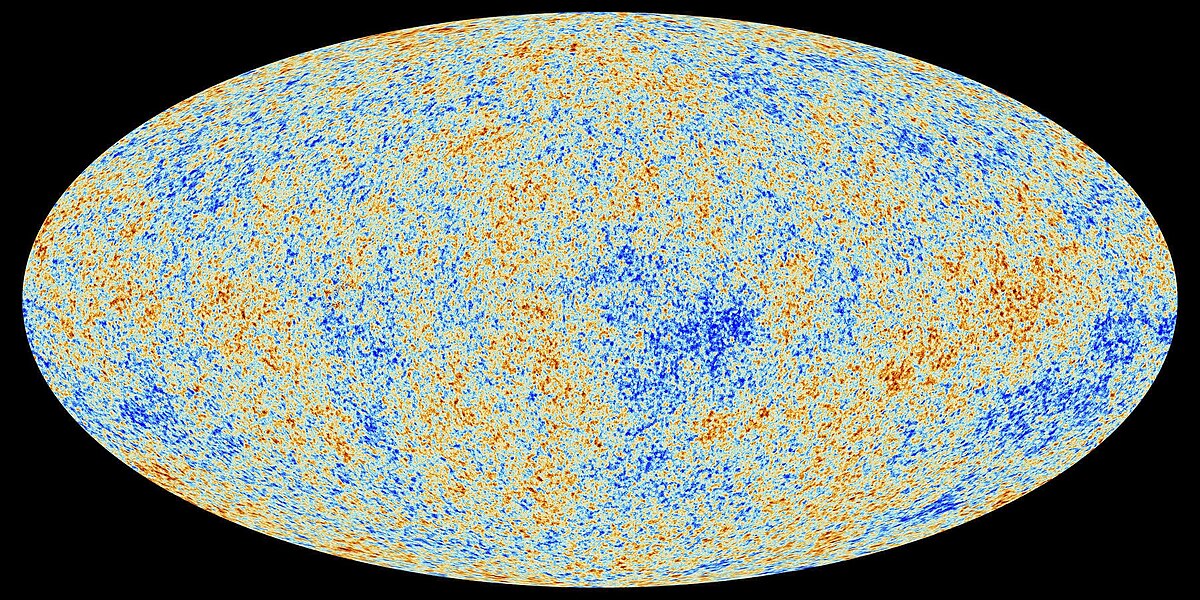
The cosmic microwave background - the oldest light in our universe, which might contain hidden memories of previous cosmic epochs
But here's the truly remarkable part: this isn't just mathematical speculation. Penrose and his collaborators have been searching for evidence of previous aeons in our own cosmic microwave background—the afterglow of our universe's Big Bang. They're looking for circular patterns that might represent the "Hawking points" where supermassive black holes from the previous aeon evaporated, leaving their signatures in the fabric of our current universe.
Think of it as cosmic archaeology, where instead of digging through layers of earth to find ancient civilizations, cosmologists are analyzing the oldest light in our universe to find traces of cosmic civilizations that existed before our Big Bang even happened. It's a search for the universe's memories of its previous lives, hidden in the static of the cosmic microwave background like ghost images on an old television screen.
The Cosmic Constant Controversy: Einstein's "Biggest Blunder" Vindicated
During his appearance on the Joe Rogan Experience, Penrose touched on one of the most fascinating vindications in the history of physics. When Albert Einstein first developed his theory of general relativity, he included a term called the cosmological constant to allow for a static universe—one that neither expanded nor contracted. When Edwin Hubble later discovered that the universe was indeed expanding, Einstein famously called the cosmological constant his "biggest blunder."
But here's the cosmic plot twist: Einstein's "blunder" might have been one of his greatest insights. In the late 20th century, observations of distant supernovae revealed that the universe's expansion isn't just continuing—it's accelerating. This acceleration is now attributed to what cosmologists call "dark energy," though Penrose himself dislikes the term, arguing that it's "neither dark nor proper energy in a clear sense."
What we're really seeing, according to Penrose, is Einstein's cosmological constant in action. The universe is being driven apart by a fundamental property of space itself, a cosmic repulsion that becomes more dominant as matter becomes more dilute. This is crucial for Penrose's cyclic cosmology because it's this acceleration that eventually leads to the universe forgetting its own scale.
As Penrose explained to Rogan, our own Milky Way galaxy is on a collision course with the Andromeda galaxy, and their central supermassive black holes will eventually merge into an even larger one. But in the far future, even these cosmic monsters will evaporate through Hawking radiation, leaving behind only the faintest whisper of gravitational waves—waves that, according to Penrose's calculations, might be preserved across the boundary between aeons.
This preservation of gravitational radiation across cosmic epochs is one of the most intriguing aspects of CCC. It suggests that while the universe forgets its mass and scale, it might retain some memory of its gravitational history. These preserved waves could be the universe's way of carrying forward essential information from one aeon to the next, like cosmic DNA encoding the fundamental patterns that will shape the next iteration of reality.
The Disturbing Beauty of Infinite Cycles
There's something both beautiful and unsettling about Penrose's vision of cosmic rebirth. On one hand, it offers a kind of cosmic immortality—the universe never truly dies but instead transforms and renews itself in an endless cycle of death and rebirth. It's a vision that resonates with ancient philosophical and religious concepts of eternal return, but grounded in the most advanced mathematics and physics of our time.
On the other hand, as Penrose himself noted when contemplating Escher's angels and devils, there's something deeply disturbing about the idea that our entire cosmic history—every star that ever shone, every planet that ever formed, every life that ever existed—might be just one iteration in an infinite series of cosmic forgettings. Are we living in the first universe, or the billionth? Have countless civilizations before us discovered these same truths, only to have their knowledge erased when their aeon ended and the universe forgot itself?
This is perhaps why Penrose finds Escher's tessellations so compelling and unsettling. In "Circle Limit IV," the angels and devils are locked in an eternal dance, each figure both distinct and part of an infinite pattern that extends beyond the boundaries of perception. The white angels and black devils (depicted as bats) transform into each other as they approach the conformal boundary, suggesting that what we perceive as opposites—creation and destruction, beginning and end, existence and non-existence—might be different aspects of the same underlying reality.
The mathematical precision of Escher's hyperbolic tessellations mirrors the mathematical precision of Penrose's cosmological theory. Both suggest that infinity can be contained within finite boundaries, that the incomprehensibly large can be understood through the elegantly small, and that the patterns we see in our local reality might be reflections of much grander cosmic structures.
The Search for Cosmic Memories
What makes Penrose's theory particularly compelling is that it makes testable predictions. If our universe is indeed one aeon in an infinite cycle, then the cosmic microwave background—the oldest light we can observe—should contain subtle signatures of the previous aeon. Penrose and his collaborators have been analyzing data from the Wilkinson Microwave Anisotropy Probe and other cosmic background radiation experiments, looking for the circular patterns that would indicate Hawking points from evaporated black holes in the previous universe.
The results have been controversial. Some analyses suggest these patterns exist, while others argue they're statistical flukes or artifacts of the analysis methods. The scientific community remains divided, but the search continues with ever more sophisticated instruments and techniques. It's a quest that pushes the boundaries of both observational astronomy and theoretical physics, asking whether we can literally see evidence of a universe that existed before our Big Bang.
Imagine the implications if such evidence were found. It would mean that the cosmic microwave background—that faint glow that fills the entire sky and represents the afterglow of our universe's birth—actually contains fossilized memories of a previous cosmic epoch. We would be looking at light that has traveled not just across space, but across the boundary between different iterations of reality itself.
This search for cosmic memories represents one of the most ambitious scientific endeavors ever undertaken. It's an attempt to answer questions that go to the very heart of existence: Where did we come from? What came before the Big Bang? Are we alone in the cosmic cycle, or are we part of an infinite sequence of universes, each one forgetting its predecessor while carrying forward the essential patterns that make existence possible?
The Philosophy of Cosmic Amnesia
Penrose's conformal cyclic cosmology raises profound philosophical questions that extend far beyond physics and mathematics. If the universe periodically forgets itself, what does this mean for concepts like progress, meaning, and legacy? If every civilization that has ever existed or ever will exist is destined to be forgotten when the universe resets itself, does anything we do ultimately matter?
These questions echo ancient philosophical paradoxes while being grounded in cutting-edge science. The idea of eternal return—that all events repeat infinitely—has been explored by philosophers from Nietzsche to the ancient Stoics. But Penrose's version is different: it's not exact repetition but rather a kind of cosmic reincarnation, where the universe is reborn with the same fundamental laws but potentially different initial conditions.
This cosmic amnesia might actually be necessary for the universe to continue existing. Just as biological organisms must die and be replaced by new generations to avoid the accumulation of genetic errors, perhaps universes must periodically forget themselves to avoid the accumulation of entropy and information that would otherwise lead to permanent stagnation.
In this view, the universe's forgetfulness isn't a bug—it's a feature. It's the cosmic equivalent of a computer reboot, clearing the memory and starting fresh while preserving the essential operating system. The angels and devils in Escher's tessellation don't disappear when they reach the boundary; they transform and begin the pattern anew, carrying forward the mathematical relationships that define their existence while shedding the specific details of their previous incarnations.
Living in the Space Between Angels and Devils
As we stand here in our current cosmic epoch, roughly 13.8 billion years after our Big Bang and an incomprehensibly vast time before that final black dwarf supernova, we find ourselves in a unique position. We are conscious beings capable of contemplating not just our own mortality, but the mortality of the universe itself. We can envision both the end of everything and the possibility of cosmic rebirth. We exist in the space between Escher's angels and devils, between creation and destruction, between memory and forgetting.
Perhaps this is what makes Penrose's theory so compelling and so unsettling. It suggests that we are not just observers of the universe but participants in a cosmic story that is both finite and infinite, both meaningful and ultimately forgotten. Every star we see in the night sky, every galaxy captured by our telescopes, every fundamental particle discovered in our accelerators—all of it is part of a pattern that extends beyond our ability to perceive or comprehend.
The beauty of this vision lies not in its certainty—science is always provisional, always open to revision based on new evidence—but in its audacity. Penrose has given us a framework for thinking about the deepest questions of existence using the most rigorous tools of mathematics and physics. He has shown us how the abstract beauty of Escher's tessellations can illuminate the concrete reality of cosmic evolution.
Whether or not conformal cyclic cosmology proves to be correct, it has already succeeded in expanding our conception of what's possible. It has forced us to think beyond the traditional narrative of cosmic evolution—birth, expansion, heat death—and consider more complex, more beautiful, and perhaps more disturbing possibilities.
The Eternal Dance
In the end, we return to Escher's angels and devils, locked in their eternal dance at the boundary of perception. As they approach the edge of the circle, they don't disappear—they transform. The devils become angels, the angels become devils, and the pattern continues infinitely inward and infinitely outward, bounded yet boundless, finite yet eternal.
This might be the deepest truth that Penrose has extracted from his mathematical exploration of cosmic cycles: that endings and beginnings are human constructs, useful for organizing our thoughts but ultimately artificial. In the grand scheme of cosmic evolution, there are only transformations—matter becoming energy, energy becoming space-time, space-time becoming possibility, and possibility becoming reality once again.
The universe that will emerge from our cosmic epoch's conformal boundary—if Penrose is right—will be both utterly different from and fundamentally identical to our own. It will have forgotten our galaxies, our stars, our planets, and our civilizations. But it will remember the laws of physics, the fundamental constants, and the mathematical relationships that make existence possible. It will be a universe reborn, carrying forward the essential patterns while forgetting the specific details.
And perhaps, in that future aeon, conscious beings will once again look up at their night sky and wonder about the nature of existence. They might develop their own theories about cosmic cycles, their own mathematics of infinity, their own art that captures the beauty and terror of living in a universe that forgets itself. They might even discover, in their cosmic microwave background, faint circular patterns that represent the last whispers of our own cosmic epoch—evidence of a universe that once was, now preserved only in the mathematical structure of space-time itself.
In contemplating these possibilities, we join a conversation that spans not just centuries or millennia, but potentially entire cosmic epochs. We become part of a pattern that extends beyond our individual lives, beyond our species, beyond our planet, beyond our universe as we know it. We become, in our small way, participants in the eternal dance of angels and devils, creation and destruction, memory and forgetting that defines the deepest structure of reality.
And in that participation, perhaps we find not despair at the ultimate forgetting, but wonder at the infinite creativity of a universe that can dream itself into existence again and again, each time forgetting its past while carrying forward its essential nature. In the space between the last supernova and the next Big Bang, between the final black dwarf and the first star of a new aeon, we find not emptiness but transformation—not an ending but a beginning that has been waiting, patient and eternal, for its moment to unfold.
The universe may forget itself, but in doing so, it remembers how to begin again. And in that cosmic amnesia, we find not loss but infinite possibility—the promise that the dance of existence will continue long after our own steps have been forgotten, long after our own music has faded into the cosmic background radiation of a universe that has learned, once again, how to dream.
Sources:
- "The Last Thing To Ever Happen In The Universe" - Kurzgesagt
- "Joe Rogan Experience #1216 - Sir Roger Penrose" - PowerfulJRE
- "Cycles of Time: An Extraordinary New View of the Universe" - Roger Penrose
- "Circle Limit IV (Heaven and Hell)" - M.C. Escher
- Various academic papers on Conformal Cyclic Cosmology
Written by Bogdan Cristei and Manus AI



